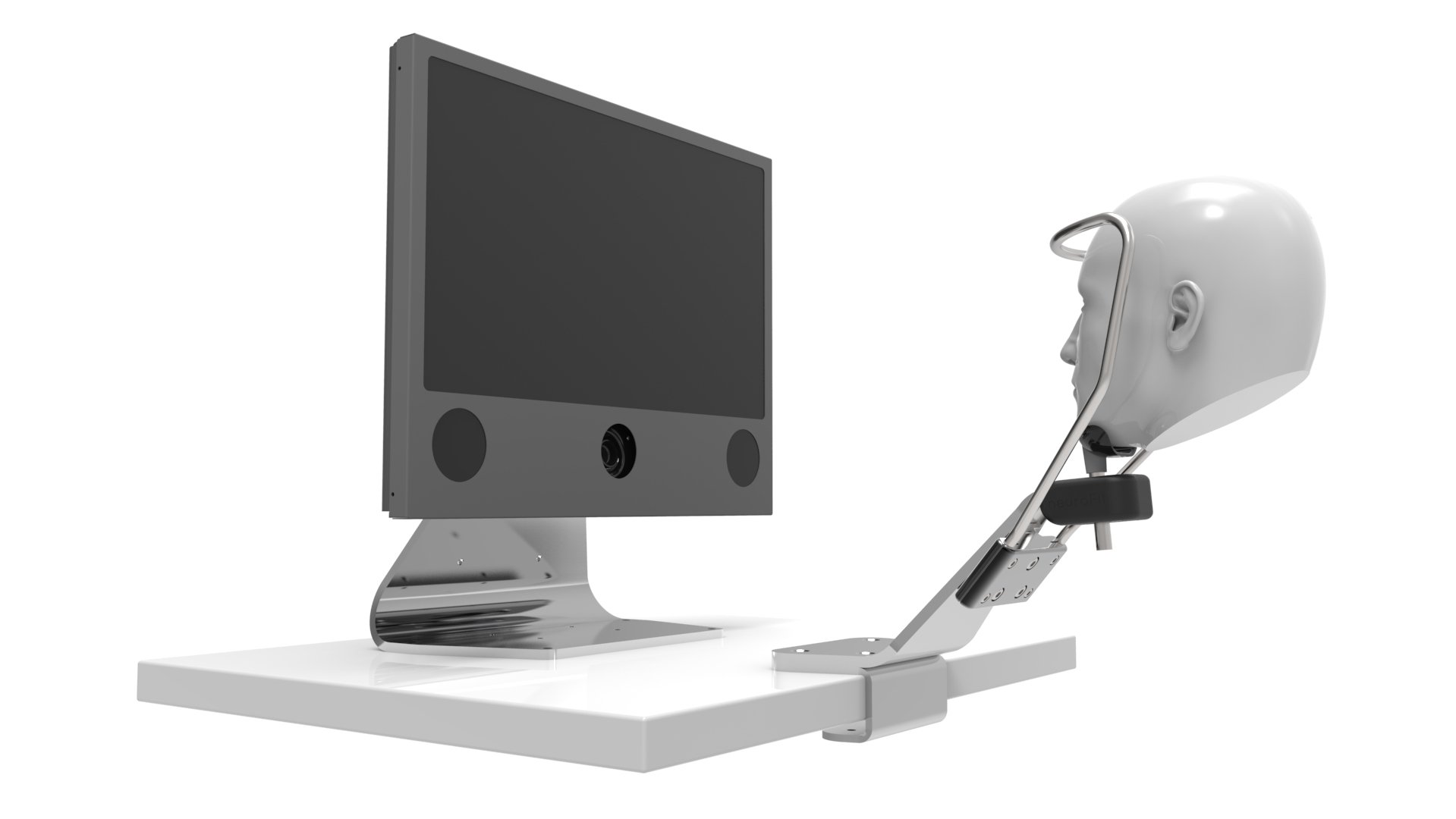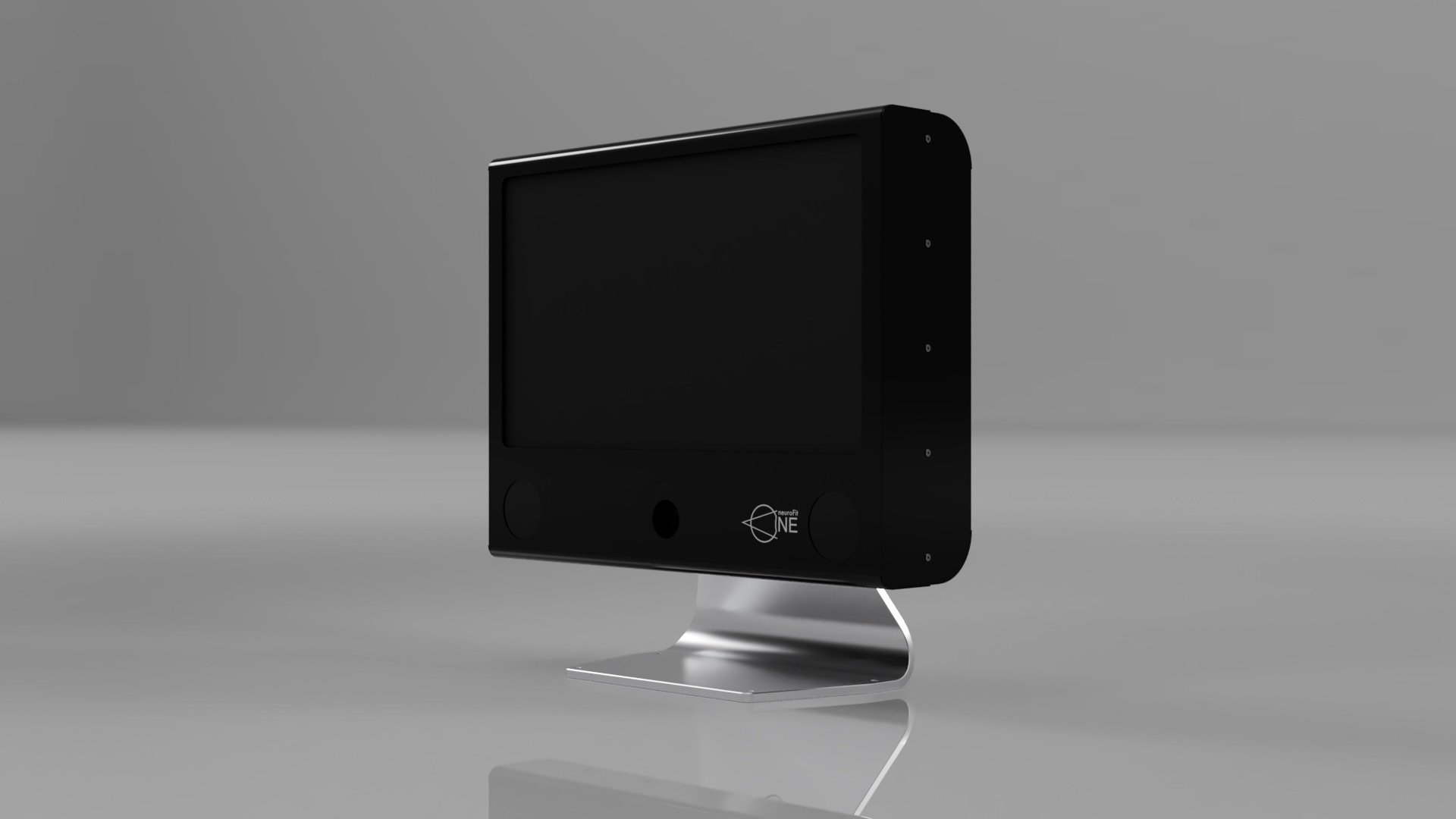


A descendant of Raymond Dodge’s “Photochronograph”, Terry Bahill’s electromechanical apparatus, and Roger Carpenter’s PC-based system, neuroFit’s ONE™ is a single-housing, general-purpose oculometric device that can be used in almost any indoor environment. Our device uses a high-end gaming display to provide finely-sampled motion to drive smooth pursuit, incorporates a high-speed camera for eye and head tracking, and has been validated using NASA-developed methods (Liston et al., 2015, Liston et al, 2016). Although neuroFit’s ONE™ looks like standard ophthalmic equipment, its function is very different than a pupilometer or a video nystagmograph because it is designed to record, analyze, and report eye-movement responses to standard stimuli used in oculomotor tasks. Using a short battery of oculomotor tests, a set of “oculometrics” (Kowler & McKee, 1987; Beutter & Stone, 1998) are extracted from the oculomotor data traces, and can be compared to data from normal populations. Oculometrics can be used to quantify the functional health of neural circuits and pathways (e.g., the retina, motion processing within visual cortical areas, oculomotor areas within the frontal lobe, motor output circuits in the midbrain and brainstem, the IIIrd, IVth, and VIth cranial nerves) within the brain, as well as the extraocular muscles.
For more than a century (Diefendorf & Dodge, 1908), researchers from the domains of psychology, physiology, neurology, and psychiatry have worked to characterize both normal and abnormal eye movements, resulting in an extensive catalogue of oculomotor signs of neural impairment, injury, and disease (Leigh & Zee, 2015). The oculomotor literature has characterized qualitative signs that accompany various neurological conditions arising from: degeneration of neural tissue (e.g., Parkinson’s disease, Alzheimer’s disease, progressive supranuclear palsy, Friedreich’s ataxia), idiopathic disease states (e.g., idiopathic elevated intracranial pressure), as well as various types of insults and injury to neural tissue (e.g., traumatic brain injury, cerebral lesions, cerebellar lesions, stroke, alcohol intoxication, hypoxia). Furthermore, these types of oculomotor signs have been reported to occur in a wide variety of psychiatric (e.g., schizophrenia, clinical depression), developmental (e.g., autism), and ophthalmic (e.g., glaucoma, retinitis pigmentosa) conditions. Although the oculomotor signs of neural impairment, injury, and disease are straightforward to measure, the specialized equipment necessary has been available only to research laboratories, and requires some technical skill to assemble, maintain, and operate properly ... until now.


